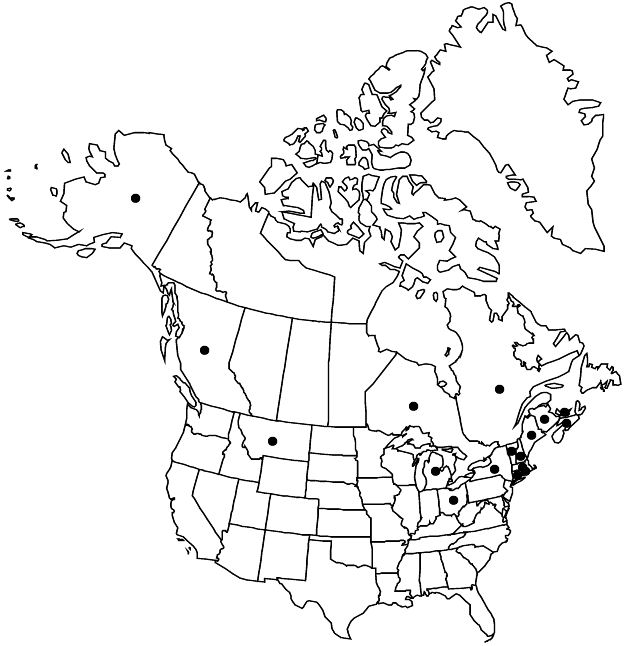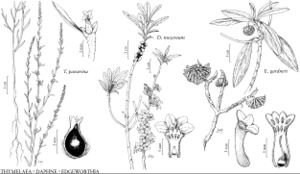Difference between revisions of "Daphne mezereum"
Sp. Pl. 1: 356. 1753.
Common names: Mezereon paradise-plant
IllustratedIntroduced
Treatment appears in FNA Volume 6. Treatment on page 385.
FNA>Volume Importer |
imported>Volume Importer |
||
| (6 intermediate revisions by 2 users not shown) | |||
| Line 10: | Line 10: | ||
|special_status={{Treatment/ID/Special_status | |special_status={{Treatment/ID/Special_status | ||
|code=F | |code=F | ||
| − | |label= | + | |label=Illustrated |
}}{{Treatment/ID/Special_status | }}{{Treatment/ID/Special_status | ||
|code=I | |code=I | ||
| Line 31: | Line 31: | ||
|elevation=0–300 m | |elevation=0–300 m | ||
|distribution=B.C.;N.B.;N.S.;Ont.;P.E.I.;Que.;Alaska;Conn.;Maine;Mass.;Mich.;Mont.;N.H.;N.Y.;Ohio;R.I.;Vt.;Europe;w;c Asia. | |distribution=B.C.;N.B.;N.S.;Ont.;P.E.I.;Que.;Alaska;Conn.;Maine;Mass.;Mich.;Mont.;N.H.;N.Y.;Ohio;R.I.;Vt.;Europe;w;c Asia. | ||
| − | |discussion=<p>Daphne mezereum was used in the herbal pharmacopoeia as a purgative. It contains daphnin and is highly poisonous.</p> | + | |introduced=true |
| + | |discussion=<p><i>Daphne mezereum</i> was used in the herbal pharmacopoeia as a purgative. It contains daphnin and is highly poisonous.</p> | ||
|tables= | |tables= | ||
|references= | |references= | ||
| Line 40: | Line 41: | ||
-->{{#Taxon: | -->{{#Taxon: | ||
name=Daphne mezereum | name=Daphne mezereum | ||
| − | |||
|authority=Linnaeus | |authority=Linnaeus | ||
|rank=species | |rank=species | ||
| Line 55: | Line 55: | ||
|publication title=Sp. Pl. | |publication title=Sp. Pl. | ||
|publication year=1753 | |publication year=1753 | ||
| − | |special status= | + | |special status=Illustrated;Introduced |
| − | |source xml=https:// | + | |source xml=https://bitbucket.org/aafc-mbb/fna-data-curation/src/2e0870ddd59836b60bcf96646a41e87ea5a5943a/coarse_grained_fna_xml/V6/V6_711.xml |
|genus=Daphne | |genus=Daphne | ||
|species=Daphne mezereum | |species=Daphne mezereum | ||
Latest revision as of 22:23, 5 November 2020
Shrubs to 1 m; branches glabrescent. Leaves deciduous, sessile; blade oblong to lanceolate, 3–8 × 1–2.5 cm, membranous, adaxial surface matte. Inflorescences 2–4-flowered. Flowers fragrant, sessile, appearing before leaves, clustered in axils of previous year’s growth; hypanthium pink, red, or white, tubular, 5–8 mm, sericeous; calyx lobes ovate or obtuse to rounded, 3–5 mm. Drupes red or yellow. 2n = 18.
Phenology: Flowering summer (Jun–Aug).
Habitat: Cool, damp woods, especially on limestone
Elevation: 0–300 m
Distribution

Introduced; B.C., N.B., N.S., Ont., P.E.I., Que., Alaska, Conn., Maine, Mass., Mich., Mont., N.H., N.Y., Ohio, R.I., Vt., Europe, w, c Asia.
Discussion
Daphne mezereum was used in the herbal pharmacopoeia as a purgative. It contains daphnin and is highly poisonous.
Selected References
None.
Lower Taxa
None.
